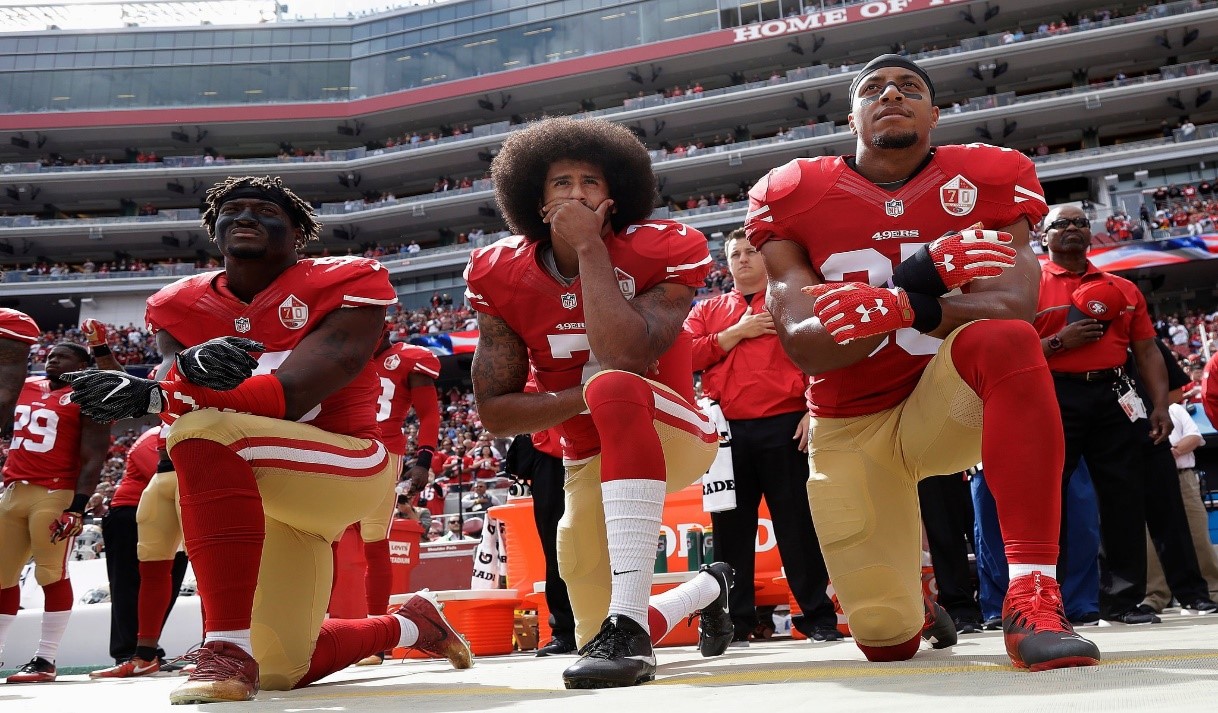In the late hours of Sunday, February 4th, and the early hours of the following Monday, the Eagles fans took to the streets of Philadelphia to celebrate their hometown’s first-ever Super Bowl win. A lot happened—cars were flipped, police and civilians were injured, street poles were ripped out of the ground, fires were started, and property was destroyed. What’s even more noticeable, however, is what didn’t happen—authorities did not fire tear gas or shoot at the unruly crowds, police dogs were not brought in, and media outlets did not use rhetoric laced with negative connotation to describe the rioting football fans.
Instead, although the Philadelphia Police Department’s presence was heavy, the city congratulated the Eagles, the mayor—as well as the city’s fire commissioner—encouraged fans to celebrate safely, and the police sergeant said it would be great if fans could go home. While this may seem like the expected and natural response—I mean, police exist to keep citizens safe, after all, right?—it serves a sharp contrast to ways police responded to similar gatherings of large crowds of predominantly people of color.
In fact, that very same morning before the Super Bowl, Minneapolis police arrested people gathered to protest police brutality. While the protest and the celebration riots occurred within 24 hours of each other, responses were strikingly different—especially considering that the Black Lives Matter protest was not harmful to any civilians or property.
Unfortunately, this is not an isolated case. For years, protests against police brutality, racism, and sexism have garnered violent police responses – even when the protests themselves are peaceful. It appears that outraged responses to people of color protesting are not a matter of public safety, but rather another tactic to suppress the voices of people of color. One needs to look no further than responses to athletes simply kneeling during the National Anthem to protest police brutality to see that even the most peaceful forms of protest by people of color or in support of people of color are still condemned and shut down.

Just as people of color are automatically faced with blame, white folks are almost immediately given the benefit of the doubt for their actions. The large groups of white folk rioting after the Super Bowl were not immediately assumed to be “thugs” or “terrorists”—instead they were thought of as passionate sport fans, perhaps a little overzealous at most.
When people of color and allies are constantly met with more police brutality and racially charged rhetoric by media outlets, and frequent blame, they are robbed of their voices and their opportunities to speak out time and time again. A culture where people of color’s voices are constantly suppressed leaves us with several problems as a society—namely, a cycle of more violence against people of color.
Over time, with white people not being held to the same level of accountability and with people of color silenced, the power scale gets further tipped for the favor of white people. This power difference increases the risk factor for sexual violence and intimate partner violence, as it creates the opportunity for abuse of power. Silencing the voices of people of color when they stand up for justice only makes it even more difficult for people of color who are survivors of sexual and intimate partner violence to speak up about their experiences and receive support. This becomes even more agonizing when the abuser holds more power and is therefore less likely to be held accountable.
As a society, we should strive for a culture of racial equity that holds all individuals to the same degree of accountability and ensures that all voices—especially those of survivors—are heard loud and clear.
Featured image: Getty Images: https://www.esquire.com/news-politics/a15839429/eagles-fans-crisco-poles-fight/
Maryum Elnasseh is a second-year student at Virginia Commonwealth University, where she is double-majoring in journalism and political science, with a concentration in civil rights. At the Action Alliance, Maryum is an intern for the Real Story Internship. She hopes to use her voice as a tool to ignite social change.
Read more news